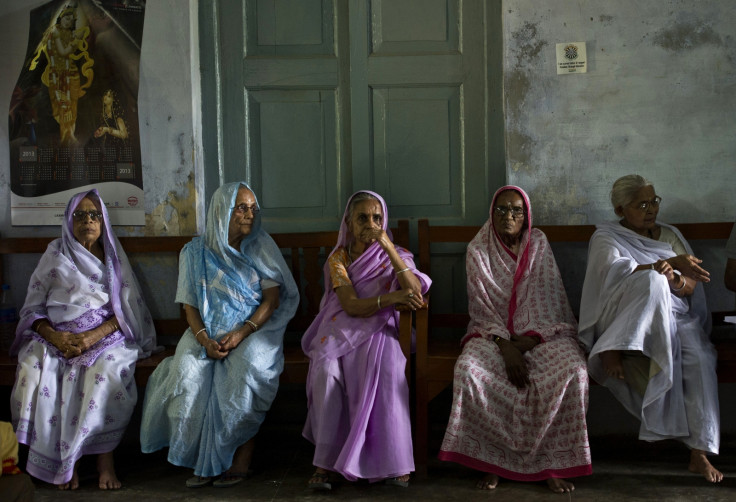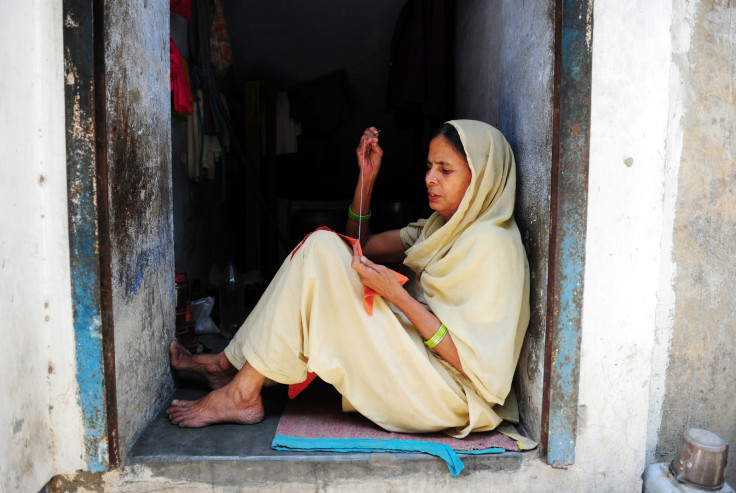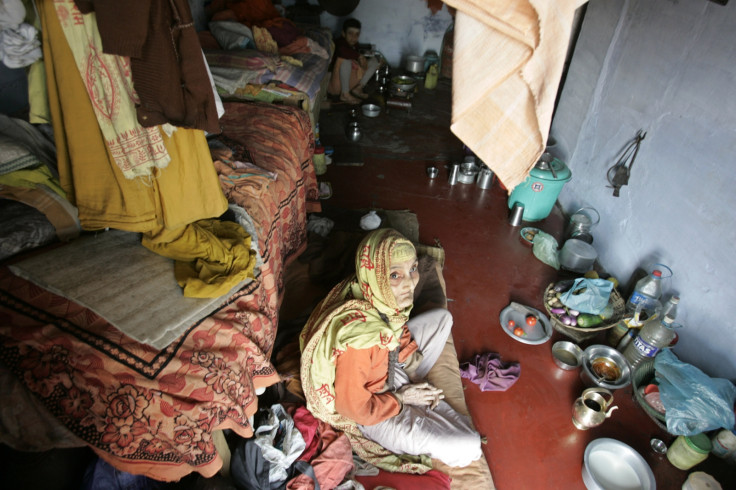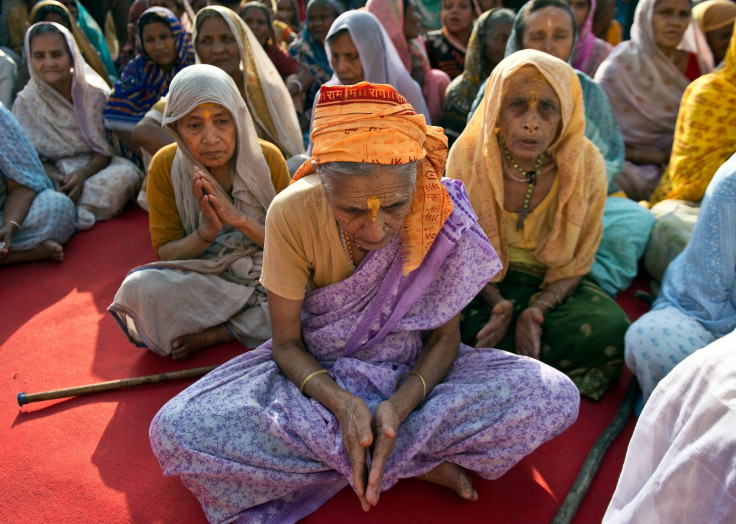City of Widows: The 38,000 forgotten women of Varanasi

Varanasi, one of Hinduism's seven holy cities, is a colourful and cultural hub of northern India. Most visitors agree the ancient city on the banks of the River Ganges is magical. Yet the city harbours a darker secret – it is home to 38,000 widowed women, a marginalised and forgotten population of which the majority live in poverty. Abandoned in the city and shunned by society, many seek refuge in the different ashrams for widows.
"Varanasi is known as the City of Widows," says Lord Raj Loomba, a member of the British House of Lords and the founder of the Loomba Foundation, which aims to promote the economic empowerment and welfare of disadvantaged widows and their children. Ten years ago today (23 June), the United Nations officially recognised International Widows' Day, launched by Loomba in 2005.
"When widows are thrown out of their households, they come to Varanasi because it is a holy city. It is the favourite city of the Hindu deity Lord Shiva, and they believe that if they die there they will go straight to heaven. Widows call it moksha – when the final release from reincarnation is gained."
A significant proportion of the widows in Varanasi – around 12,000 – are aged between 20 and 45. Poverty and disease, including HIV infection, are some of the main reasons young women are being widowed at such a young age. But cultural practices, namely child marriage, are a major driving force behind the problem in India.
"Girls are often married at an early age, sometimes as teenagers to much older men. When the men die, the women are left as widows," Loomba says. The country has the highest number of child brides in the world. Although fewer girls are marrying before the age of 15, rates of marriage among those aged 15 to 18 have increased to 29.2%. Uttar Pradesh, the most populous state in India, also has the most married children – around 2.8 million according to census figures. Poverty, dowries, gender expectation, tradition and a lack of education opportunities for girls are behind the numbers.

Poverty is killing men, contributing to the young age of Varanasi's widows, Loomba says. "Men often have to work in unconventional environments, in factories or on roads where the temperature can reach 45 degrees centigrade, so they die at an early age.
"Not only do women normally live longer than men, HIV is killing many. All these reasons mean there are more widows than widowers."
Six years after the foundation began in India, Loomba's research revealed the problem was global. There are estimated to be 258 million widows worldwide, a 9% increase since 2010. Of these women, 14.8% live in extreme poverty – their basic needs go unmet. Without their husbands, widows are removed from visibility and discarded as social outcasts. They not only face discrimination as women but are left vulnerable to rape, murder, physical violence, prostitution, trafficking, forced labour and eviction.
In Varanasi, and other northern holy cities such as Vrindavan, widows are expected to relinquish all pleasure in life. Holi, the festival of colours, is one of the largest Hindu holidays celebrated across India. Yet orthodox traditions forbid widows from taking part. In parts of the country, however, women are reclaiming their right to celebrate Holi. In 2013, the NGO Sulabh International organised three days of festivities in Varanasi and Vrindavan, to include widows in mainstream society and reduce social stigma.
By providing widows with training and education, the Loomba Foundation hopes to empower women and their families to overcome poverty in the long-term. Of the younger Varanasi widows, the charity plans to speak to 5,000 to assess what kind of job they would like.
"We will speak to each and every one of them and ask what field of work they are interested in," Loomba says. "There are quite a few areas where widows don't have to have graduated from university or college but they can learn the basics of a trade and find a job."

"We have a sewing machine project where we train people to make garments and then give them a machine so they can start a business or make money, but we also train women to use computers or teach them English, as well as hair and beauty training to work in salons."
Rashida was 39 when her husband died in 2008. She was the only breadwinner for her seven family members, five of which were her children. With no money, she couldn't feed her children or send them to school, as she was barely earning a dollar a day. She had no help from relatives and her in-laws abandoned her, forcing her son to give up school to help her earn more money. In 2012, Rashida was given a sewing machine and training and she now earns around 3,000 rupees (£30, $47) a month.
As well as vocational training, Loomba says around 18 women are being sent to universities to study for degrees in engineering. "In two years, they will be engineers and can get very good jobs," he adds. "We want to empower widows by providing them with training, so they can find a job and live a life of dignity."
Another woman, living in poverty in Delhi with her five daughters, received hair and beauty care training for two months. "We helped her open a salon," Loomba says, adding that Cherie Blair, a patron of the foundation, attended the launch of the business. "The woman is now doing extremely well. She has been able to send her daughters to school."
But it is essential not only to help widows get back on their feet, but to provide their children with an education – to undercut the cycle of poverty from generation to generation. To date, the foundation has educated over 10,000 children of widows across India. It provides each child with a scholarship of 500 rupees per month, enough to support the child while providing a sustainable amount for the mother.

The foundation has grown incredibly since it began in 1997. One of the major successes is International Widows' Day on 23 June, the day when Loomba lost his father. His mother, Shrimati Pushpa Wati Loomba, was widowed at the age of 37.
"I grew up as a widow's son and I saw my mother facing discrimination and prejudice," he says. "I was only ten when my father died. His body was still lying in the house being prepared for cremation when my grandmother, who herself was a widow, ordered my mother to change her clothes to white and to remove her bindi – the sign of marriage for women.
"Life changed completely from top to bottom overnight because she lost her husband. My father was a very successful businessman who had good clothes and my mother was living the high life. All of a sudden she was demeaned because my father died."
Too young to realise this at the time, it was only when Loomba married his wife Veena – co-founder of the foundation – that he understood the extent to which widows are marginalised.
"At our wedding, the priest asked my mother to move away from altar she could bring bad luck to the new couple as a widow," he says. "That really made me angry. I thought how could a mother who gave birth to me, educated me, looked after me, who always wished me well – how could she cause problems for me?"
Loomba's mother was affluent and able to provide her children with an education. But this is not the case for many widows, he adds. "There are women who can't send their children to school and poverty perpetuates from generation to generation. It seemed we weren't doing anything about the problem, just sweeping it under the carpet."
"If we help and empower widowed women then poverty will be reduced. Widows, their children and other dependents are all affected on a huge scale. It is a calamity we cannot ignore."
© Copyright IBTimes 2025. All rights reserved.






















